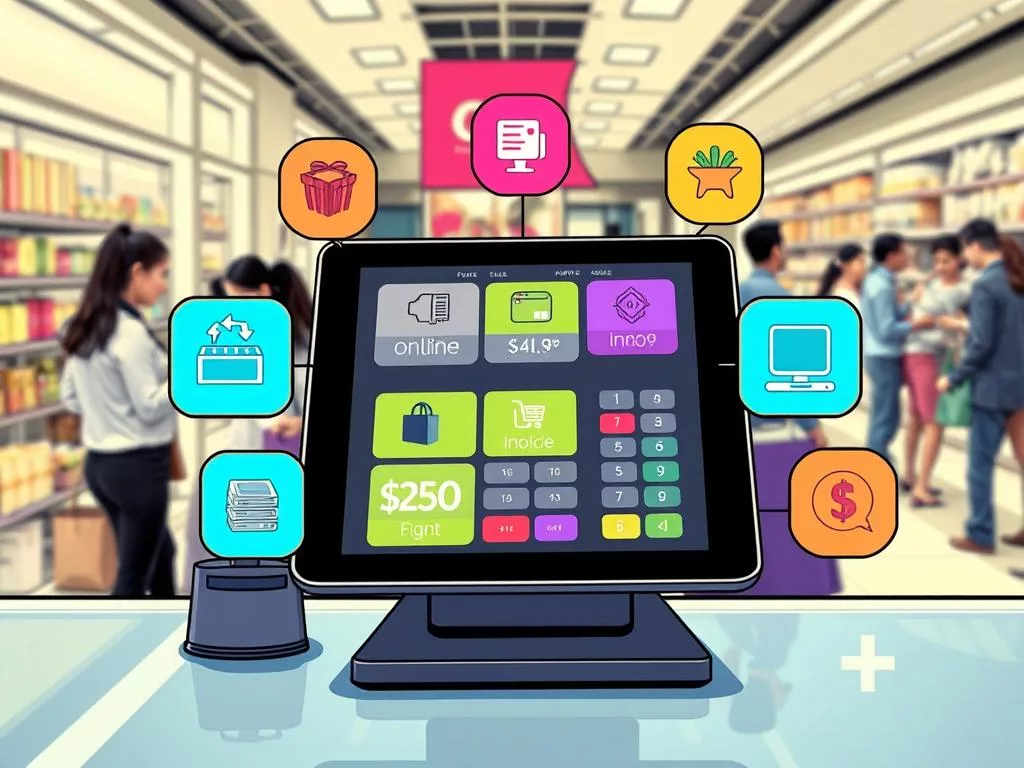Choosing the right payment processing solution is key for business success today. Stripe and Square are top choices for small and medium-sized businesses. They offer unique benefits and capabilities for handling transactions well.
The fast growth of payment technology makes it important to know the differences between Stripe and Square. In this comparison, I’ll look at their features, pricing, and user experiences. This will help me choose the best payment processor for my business needs.
Introduction to Payment Processing Solutions
Payment processing solutions are key for smooth transactions between businesses and customers. Choosing the right one affects efficiency, security, and how customers feel. Businesses use online payment systems for many payment types, like credit cards and digital wallets.
Digital payments offer big benefits for businesses today. They make transactions safer, cut down on mistakes, and handle routine tasks automatically. This lets business owners spend more time growing and talking to customers. Good payment solutions also give real-time reports, helping with money management.
It’s important to pick a payment solution that fits your business. For example, a store might need a system that works well with point-of-sale machines. An online shop might need a system that handles international payments. So, knowing what your business needs is key when picking a payment provider.

Key Features of Stripe
Stripe is a top choice for tech startups and e-commerce sites. It’s loved for its flexibility and easy integration with many platforms. Developers can customize it to fit their business needs, thanks to its customization options.
Looking at Stripe pricing, it’s very competitive. There are no monthly fees. Online transactions cost 2.9% plus 30 cents per charge. In-person sales are 2.7% plus 5 cents.
Stripe also charges an extra 1% for international cards and currency conversions. This is important for businesses that sell worldwide.
The scalability of Stripe is a big plus. It supports over 135 currencies and does dynamic currency conversions. This helps businesses sell globally without changing accounts.
Stripe also has top-notch fraud protection. It uses advanced machine learning to keep transactions safe. This is key for businesses that sell across borders.
Stripe offers many customization options. It has hundreds of third-party integrations, like QuickBooks and Amazon Web Services. These integrations make managing payments and customers easier.
Stripe also supports many payment methods. This includes credit and debit cards, and mobile wallets like Apple Pay and Google Pay. This meets the needs of today’s shoppers.
In short, Stripe is a top choice for payment processing. It has advanced features, flexibility, and a supportive setup for businesses. Its pricing and scalability are great for online sales and subscriptions.
Key Features of Square
Square is known for its easy-to-use interface. It makes setting up and using the platform simple for businesses. It’s great for brick-and-mortar stores, helping them manage sales in person.
The pricing of Square is another big plus. It starts with a free plan that includes a mobile card reader. This is perfect for new businesses or those on a tight budget. As businesses grow, Square offers more advanced plans with extra features.
Square also has tools to boost productivity and sales. You can build a website and sell on social media. Plus, it offers various hardware options for easy payment acceptance.

In comparing POS systems, Square stands out. It supports both online and in-person sales. This is great for small businesses that need to manage different sales channels. Square also has special solutions for industries like restaurants.
Overall, Square is a top choice for businesses. It offers a wide range of features, flexible pricing, and great support for physical retailers.
| Feature | Details |
|---|---|
| User-Friendly Interface | Quick setup and ease of use for retail operations |
| Mobile Card Reader | Free option available with basic services |
| Website Builder | Integrated tool for creating online stores |
| Social Media Selling Tools | Facilitates sales through various social platforms |
| Hardware Variety | Card readers and registers cater to diverse needs |
| Industry-Specific Solutions | Tailored products for markets like food service and retail |
Stripe vs Square: Which One is Best for your Business?
When looking at Stripe and Square, it’s key to see which fits your business needs best. Stripe is great for e-commerce sites needing lots of customization and global sales. It supports payments from 195 countries in 135 currencies, perfect for international sales. It also offers over 100 payment methods for a more personalized experience.
Stripe’s fees start at 2.9% + $0.30 for online sales, and 2.7% + $0.05 for in-person sales. It has a high overall reviewer score of 4.46/5.
Square, on the other hand, is perfect for retail stores and restaurants. It offers easy-to-use POS systems right from the start. Square has a good score of 4.43/5 and charges lower fees, starting at 2.6% + $0.10 for in-person sales. It also doesn’t charge for chargebacks up to $250 a month, which is great for businesses with changing chargeback rates.
The table below summarizes key features and scores to help in choosing payment processors that fit operational demands:
| Feature | Stripe | Square |
|---|---|---|
| Overall Reviewer Score | 4.46/5 | 4.43/5 |
| Pricing Score | 4.25/5 | 4.25/5 |
| Hardware Score | 4/5 | 4.5/5 |
| Software Features Score | 4.79/5 | 4.17/5 |
| Support & Reliability Score | 4.58/5 | 3.75/5 |
| User Experience Score | 4.69/5 | 4.69/5 |
| Transaction Fees | From 2.7% + 5 cents | From 2.6% + 10 cents |
Both Stripe and Square offer great options for businesses. Think about your needs for pricing, setup, support, and growth. This way, you can choose the best payment processor for your business goals. Learn more about choosing payment processors that fit your business.
Conclusion and Recommendations
Looking at Stripe and Square, it’s clear that the right payment system is key. It affects how well a business runs and how happy its customers are. For tech startups and online shops needing strong API links and to grow globally, Stripe is the best. It has great analytics and reports in real-time, helping businesses grow.
But, for small shops with physical stores, Square is a better fit. It has clear pricing and an easy-to-use POS system. This makes it great for businesses that want to save money but don’t want to give up on features.
Choosing between Stripe and Square depends on your business type and goals. Knowing which one to pick can help businesses run smoother, make customers happier, and stay ahead in the digital world.

